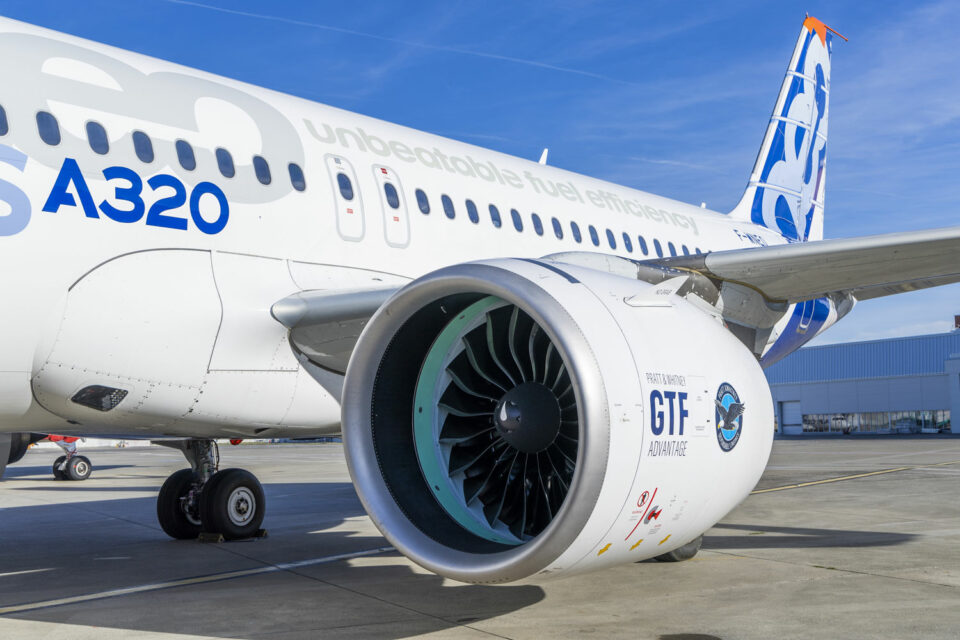Any gain in fuel consumption efficiency and reduction of pollutant emissions in aviation is considered significant, even if it represents a saving of only 1%.
This is the improvement offered by Pratt & Whitney in its new GTF Advantage turbofan engine, which has begun to be tested in an Airbus A320neo aircraft, according to an announcement by the engine maker released on Tuesday.
According to Pratt & Whitney, the initial flight test campaign will serve to mature the upgraded engine, as well as evaluate it in different environments, including hot and cold weather and operation in airports located at high altitudes.
In ground trials, the GTF Advantage underwent more than 2,400 hours and 7,800 test cycles, including tests with sustainable aviation fuel (SAF), said the company, which is evaluating the new product at its headquarters in Mirabel, Canada.
“GTF engines already offer the lowest fuel consumption and CO2 emissions for the A320neo family,” said Rick Deurloo, president of Commercial Engines at Pratt & Whitney. “The GTF Advantage engine extends that lead. It also enhances aircraft capability by increasing thrust and protects durability by running cooler.”

Pratt & Whitney says the GTF Advantage is most efficient during takeoffs. At sea level, the new engine generates 4% more thrust in the take-off phase and at higher airports, the gain is up to 8%, compared to the current GTF engine used in the A320neo.
According to the manufacturer, the improvement in the turbodan increases the aircraft’s flight range and payload, making it particularly suitable for the new Airbus A321XLR, a twin-engine single-aisle jet with the longest range in history. GTF Advantage certification is expected in the second half of 2023.
Pratt & Whitney’s GTF line engines are among the most widespread in aviation, especially in narrow-body jets.
Versions of this engine power Airbus A220 and A320neo family aircraft, as well as Embraer’s E-Jets 2. Another plane that used the Canadian company’s turbofan was the Russian Irkut MC-21, but which is replacing it with the PD-14, produced in the country.

